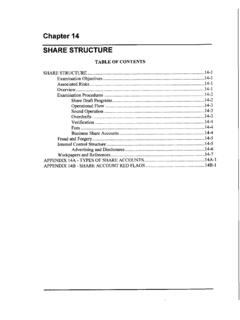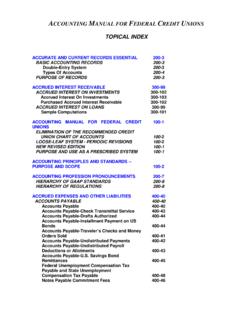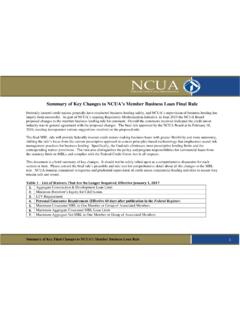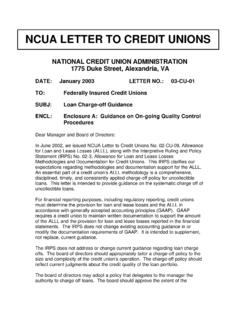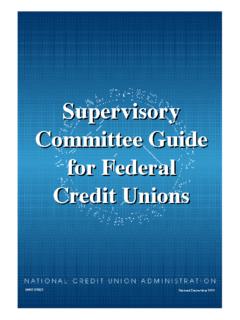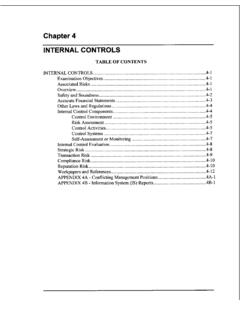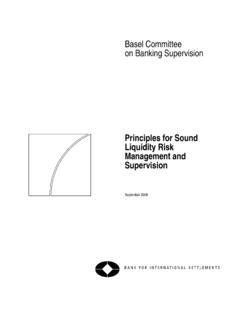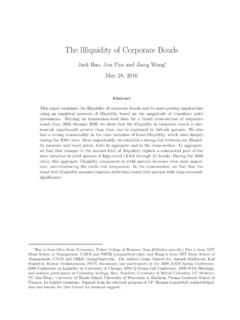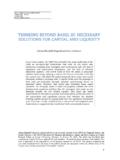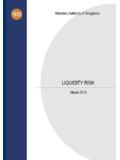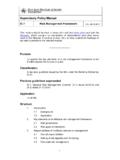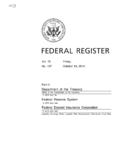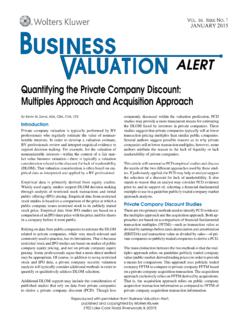Transcription of NCUA LETTER TO CREDIT UNIONS
1 1 ncua LETTER TO CREDIT UNIONS NATIONAL CREDIT union ADMINISTRATION 1775 Duke Street, Alexandria, VA 22314 DATE: October 2013 LETTER NO.: 13-CU-10 TO: Federally Insured CREDIT UNIONS SUBJ: Guidance on How to Comply with ncua Regulation liquidity and Contingency Funding Plans ENCL: (1) Appendix: How to Establish Access to the Federal Reserve Discount Window and Central liquidity Facility (2) liquidity and Contingency Funding Plans (3) Interagency Policy Statement on Funding and liquidity Risk Management Dear Board of Directors and Chief Executive Officer: The ncua Board adopted a final rule on liquidity and contingency funding plans on October 24, 2013.
2 ncua adopted this rule to ensure all CREDIT UNIONS conduct sound liquidity planning, and large CREDIT UNIONS establish access to at least one federal source of contingent liquidity : the Federal Reserve Discount Window (Discount Window) and/or Central liquidity Facility (CLF). As we learned during the financial crisis, sound liquidity planning and access to federal liquidity sources are vital to the safety and soundness of the CREDIT union system. The effective date of the rule is March 31, 2014. The purpose of this LETTER is to advise you of your responsibilities under the liquidity rule, explain the impetus for the rule, and provide guidance on certain liquidity planning expectations and provisions of the rule.
3 Which CREDIT UNIONS are subject to the rule? Section , liquidity and Contingency Funding Plans (the liquidity rule ), is applicable to all federally insured CREDIT UNIONS (FICUs), but does not apply to corporate CREDIT UNIONS . The rule establishes a three-tiered framework for CREDIT UNIONS as follows: 2 CREDIT union Asset Size1 Requirement Under $50 million FICUs with less than $50 million in assets must maintain a basic written liquidity policy. The policy must provide a CREDIT union board-approved framework for managing liquidity and a list of contingent liquidity sources that can be employed under adverse circumstances.
4 $50 million or more In addition to a written liquidity policy, FICUs with assets of $50 million or more must have a contingency funding plan (CFP) that clearly sets out strategies for addressing liquidity shortfalls in emergencies. $250 million or more In addition to a written liquidity policy and contingency funding plan, FICUs with assets of $250 million or more must establish access to at least one contingent federal liquidity source: the Discount Window and/or CLF. What does my CREDIT union need to do and when? Table 1 summarizes the rule s key action steps and compliance dates.
5 Table 1: Timeframes for Compliance FICUs with Total Assets: Actions Required by March 31, 2014 Actions Required by December 31, 2014 Under $50 million Have a basic written liquidity policy for managing liquidity in accordance with (a). $50 million or more Establish and document a contingency funding plan in accordance with (b) and (d). $250 million or more Apply for access to at least one contingent federal liquidity source in accordance with (c). Conduct advance planning and a test of contingent funding sources in accordance with (c). What steps are necessary for my CREDIT union to take prior to and after the effective date of the rule?
6 Table 2 provides suggested timing for necessary action steps. 1 For the second and third tier requirements, certain CREDIT UNIONS are subject to the higher requirements when total assets exceed the applicable threshold for two consecutive Call Reports. 3 Table 2: Recommended Timetable for Compliance Action Steps Regulatory Requirement Recommended Timetable for Monthly Action Steps Nov 2013 Dec 2013 Jan 2014 February-March 2014 Have a basic written liquidity policy for managing liquidity in accordance with (a).
7 Review ncua guidance and conduct due diligence. Complete due diligence. Assess current policy revisions, if any. Finalize draft changes to policy, and present to CREDIT union board. Take CREDIT union board action to affirm/adopt written liquidity policy. Establish and document a contingency funding plan in accordance with (b) and (d). Review ncua guidance and conduct due diligence. Complete due diligence. Assess current plan revisions, if any. Finalize draft changes to plan, and present to CREDIT union board. Take CREDIT union board action to affirm/adopt contingency funding plan.
8 Apply for access to at least one contingent federal liquidity source in accordance with (c). Contact CLF and/or Federal Reserve Bank to coordinate process for establishing relations and receive instructions. Complete review of necessary CLF membership and/or Fed agreements and resolutions. Work with CLF and Reserve Banks to resolve any issues, and present to CREDIT union board. Take CREDIT union board action to complete and file necessary CLF membership requirements and documents and/or file necessary lending agreements and corporate resolutions to obtain CREDIT from a Federal Reserve Bank.
9 Regulatory Requirement Between March 31, 2014 and December 31, 2014 Conduct advance planning and a test of contingent funding sources in accordance with (c). For CLF: Conduct a test of funds-delivery process in accordance with CLF instructions. For Discount Window: Identify unencumbered assets to pledge, pre-position collateral, resolve potential subordination agreements, and conduct a test transaction. Why did ncua issue the liquidity rule? A major impetus for the liquidity rule is the failure of Central Federal CREDIT union and the associated wind-down of its temporary successor, Central Bridge Federal CREDIT union ( Central).
10 Central played a pivotal role as an agent of CLF by purchasing CLF stock and thereby extending contingent liquidity protection to consumer CREDIT union members of Central s member corporate CREDIT UNIONS . This provided federal liquidity coverage to almost the entire CREDIT union system. Central Bridge was liquidated in October 2012 as part of its planned resolution. With this closure, CLF redeemed Central s CLF stock and paid out the cash proceeds to Central Bridge. When this redemption took place, the agent group arrangement was terminated. As a result, the roughly 6,000 consumer CREDIT UNIONS that had CLF access through their corporate CREDIT UNIONS lost that coverage.

